Tag Archives: offshore wind farms

Offshore wind farms will damage New Jersey’s economies and ruin it’s ocean views
The hundreds of wind turbines due to be built up to 20 miles off New Jersey in the next five years or so will spoil ocean views, undermine local economies and hurt wildlife while boosting the profits of overseas developers, critics say. These opponents reject claims by wind farm builders and their enthusiastic supporters, including Gov. Phil Murphy, that the clusters of turbines are emissions-free. The manufacture and maintenance of the massive steel structures will require huge amounts of fossil fuel-powered energy,,, Jim Donofrio, executive director of the nonprofit Recreational Fishing Alliance, rejected Murphy’s argument that offshore wind is good for the environment, the economy and the future. >click to read< 08:33
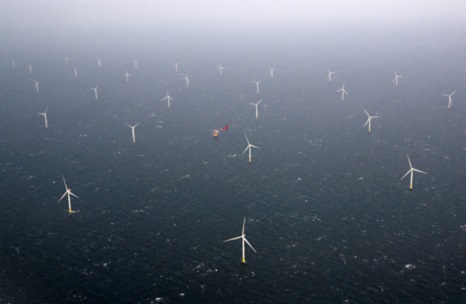
Forgotten industries – Auctioning off enormous areas of precious fishing grounds to offshore wind farm developers
At a time when Scottish fishing communities are still trying to come to terms with the regulations they face after the Westminster Government’s adoption of a Brexit deal,,, The Scottish Government appear to be intent on heaping more pressure on the Scottish fishing communities, as they are presently auctioning off enormous areas of precious fishing grounds to wind farm developers and are creating massive Marine Protected Areas, that prohibits fishing activities. This will concentrate the fishing effort in other areas, putting more pressure on the available fish stocks in what fishing grounds are left. By William Polson, Whalsay, Shetland. >click to read< 18:12
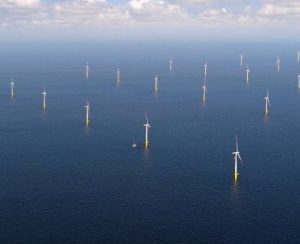
Momentum building for California offshore wind farms
Last month, Assemblyman David Chiu, D-San Francisco, introduced a bill that sets a target of generating 3,000 megawatts of offshore wind by 2030, which could power hundreds of thousands of homes, and 10,000 megawatts by 2040. “Put in perspective, the larger target is nearly equal to the electrical generating capacity of all the large solar farms in California today and nearly double all the wind farms now operating on land in California,”. Chiu said his Assembly Bill 525 would create 14,000 jobs. (sure!) Commercial fishing organizations also have expressed concerns about whether the wind farms would put fishing areas off limits. >click to read< 13:02
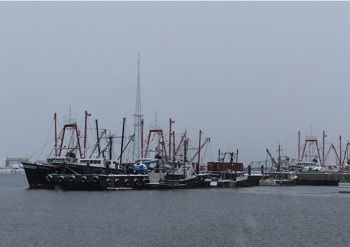
America’s largest scallop company sues New Bedford over waterfront expansion
Roy Enoksen and his business partner own the largest scallop fleet in the world. Their 27 fishing vessels bring more than 80,000 pounds of seafood into New Bedford each day, employing more than 400 captains, fishermen and support staff. But a construction project planned by the city’s port authority would cut off water access at one of Enoksen’s boat maintenance facilities. A lawsuit filed by Enoksen last month has blown the lid off a simmering conflict between New Bedford and one of the largest employers along its waterfront. >click to read< 08:40
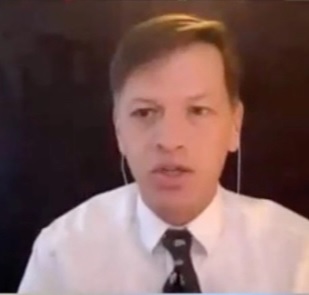
Baker’s embattled climate undersecretary targets fishing industry for Euro wind farmers!
David Ismay is again being called out for his questionable comments — this time against fishermen. The Massachusetts Fiscal Alliance, that broke the first video on the $130,000-a-year official’s rhetoric, says he also told climate activists that in order to obtain enough (offshore) wind power, “something has to give” in regard to the fishing industry. “We need offshore wind, and yes there is fishing out in the ocean too, but you know, there’s, we can’t have no offshore wind, no transmission, no solar, and have clean energy. Right. Something has to give,” Ismay is quoted telling Vermont climate advocates. He goes on to discuss transmission lines that will be placed in the ocean. >click to read< 13:00
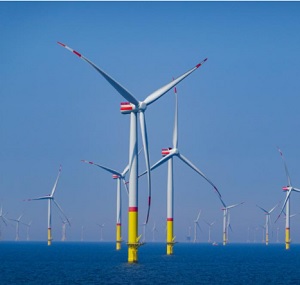
Offshore Wind Plans Will Drive Up Electricity Prices And Require ‘Massive Industrialization Of The Oceans’
Joe Biden’s climate advisors (crackpots) are calling for the immediate approval of a slew of pending offshore wind projects. In New York, Governor Andrew Cuomo is calling for 9 gigawatts of offshore wind capacity to be built by 2035. Other East Coast governors (a real crackpot)are also floating multi-gigawatt offshore plans. In all, according to a report issued by the Bureau of Ocean Energy Management last June “approximately 22 gigawatts of Atlantic offshore wind development are reasonably foreseeable along the East Coast.” >click to read< 10:34
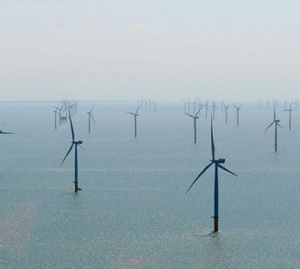
MPA Fishing Ban: Another Industry Sell-Out,,, For what? Big Wind, or Conservation?!!
The NFFO has hit back at the Marine Management Organisation’s announced intention to outlaw towed gears in the Dogger Bank SAC and the majority of three other offshore MPAs, describing the move as a ‘further sell-out of fishing’. Describing the announcement as a shocking development, ‘Not even lightweight seine nets are to be permitted,,, The proposals amount to a further sell-out of fishing. It augers ominously for other areas and for fishing communities in our increasingly crowded seas.’ Many will now be asking what has changed. They will also be asking how the government can permit the development of four of the largest wind farms in the world on the same site but take such a sledgehammer to fishing. >click to read< 14:47

The Maine Fishing community weighs in on offshore wind development
Maine’s fishing community is deeply concerned that wind development will end our fishing heritage, which has sustained coastal communities for centuries and is integral part of Maine’s identity. Without dedicated research proving otherwise, we are skeptical that offshore wind can deliver on its promise of affordable clean energy as promised by global energy companies. “The state of Maine should be wary of trading its fishing heritage by entering a race to fulfill empty promises from international energy companies,” warned Executive Director Patrice McCarron of the Maine Lobstermen’s Association. Wise words from the Executive Director. >click to read< 11:30

New York State more than doubles the number of foreign wind turbines planned off the coast of Long Island
New York State’s decision last week to award two “massive” offshore wind power contracts to Norwegian energy giant Equinor will more than double the size of a planned wind farm off the coast of Long Island. It also promises “substantial” upgrades to a section of the electric grid at Oceanside. The 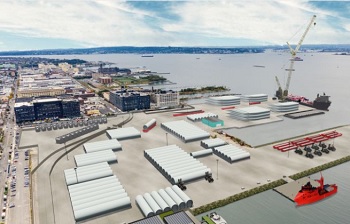 plan, announced by Gov. Andrew M. Cuomo last week as part of an expansive post-COVID-19 green economy, would bring the number the number of turbines expected to be spinning off the South Shore by 2027 to around 170, encompassing some 80,000 acres from Jones Beach to Islip, the company said. >click to read< 08:50
plan, announced by Gov. Andrew M. Cuomo last week as part of an expansive post-COVID-19 green economy, would bring the number the number of turbines expected to be spinning off the South Shore by 2027 to around 170, encompassing some 80,000 acres from Jones Beach to Islip, the company said. >click to read< 08:50

Government urged to set up areas off-limits to offshore wind farms
The suggestion was made against the backdrop that a foreign company is reportedly planning a possible offshore wind farm project in waters off northeastern Taiwan. The EnerVest Co. Ltd., a subsidiary of the German InfraVest Group, is said to be attempting to set up a wind farm around the islets of Pengjia, Huaping and Mianhua. The proposal, however, has received objections from local fishermen and governments for fear that doing so could fishermen and governments as the area has long been a traditional fishing ground. >click to read< 12:24
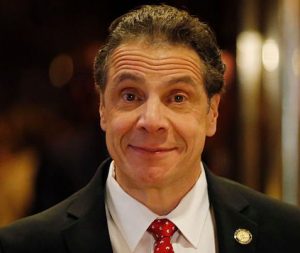
New York Selects Equinor for Largest US Offshore Wind Award
“Together, Equinor and the State of New York will create a robust offshore wind supply chain capable of manufacturing, assembling, and staging these projects at scale. As Equinor works to expand its renewable energy presence across the United States and the globe, New York’s leadership clearly illustrates the transformative benefits of offshore wind on climate goals and economic activity alike,” says Siri Espedal Kindem, President of Equinor Wind U.S.,,, “Governor Cuomo has taken the necessary actions to position New York as a national hub for the U.S. offshore wind industry, >click to read<09:34

NAFTA 2.0 – US wind project delay pushes approval to Biden era
As part of his clean energy strategy, incoming president Joe Biden wants the US to install tens of thousands of wind turbines,,, Vineyard Wind is a joint venture of Copenhagen Infrastructure Partners and Avangrid, a US subsidiary of Spain’s Iberdrola.,,, Vineyard Wind said its choice of GE meant “a historic American company will play a vital role in the development of the first commercial-scale offshore wind power in the US”. GE’s Haliade-X turbines, the world’s most powerful, are manufactured in France. >click to read< 08:53 Imported components for the renewed service economy!
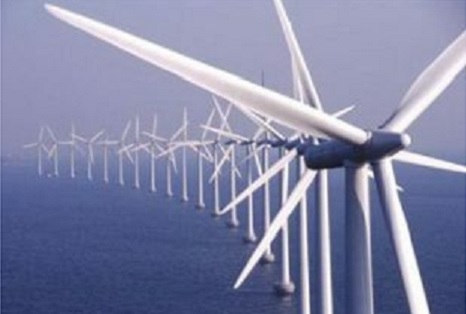
Offshore Wind Industry Cheers Biden Win
Trade groups representing the United States’ offshore wind sector are hailing the election of Joe Biden as the 46th President of the United States as significant to further growing the nation’s offshore wind capacity. Biden’s climate action plan calls for a 100% clean energy economy and net-zero emissions by 2050. This would means a renewed focus on renewable energy, including offshore wind, as the United States is likely to rejoin the Paris Agreement on climate change. Under the Biden Administration, it is expected that offshore wind will experience substantial growth from projects, supply chain development, and job creation, according to The Business Network for Offshore Wind, a non-profit that works to promote the offshore wind supply chain in the U.S. >click to read< 07:51
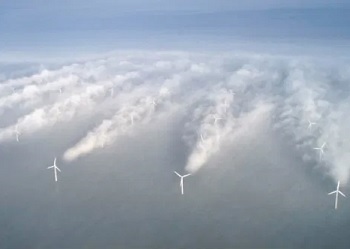
New Data Casts Doubt On Johnson’s Offshore Wind Scheme – industry has overestimated the technically accessible wind resource
The Global Warming Policy Foundation (GWPF) has written to the chairman of the Treasury Committee of the House of Commons providing new evidence for their inquiry into the Net-Zero target. The letter presents data from windfarm accounts showing that the wind industry has overestimated the technically accessible wind resource,, This new information shows that it will be necessary to introduce greater separation distances between wind turbines and wind farms, at greater costs. The letter draws attention to the evidence in the audited accounts of Burbo Bank Extension wind farm, recording payments made to another wind farm nearby, in compensation for reduced output caused by so-called “wake effects.” In effect, the Burbo Extension turbines have been taking the wind out of its neighbor’s sails. >click to read< 10:53

Puffins Pummelled: Offshore Wind Turbines Annihilating Britain’s Seabirds: Entire Species Threatened
The offshore wind industry is already exacting a phenomenal toll on a whole range of seabirds in the waters surrounding Britain. However, if Boris Johnson’s plans to carpet Britain’s coasts with more of these things come to fruition, then expect to see the wholesale wipeout of entire species, including the iconic puffin. Puffins and other seabirds will be driven to extinction by Boris Johnson’s plan to power Britain with ‘limitless’ offshore wind energy by 2030, warns RSPB >click to read< 09:19
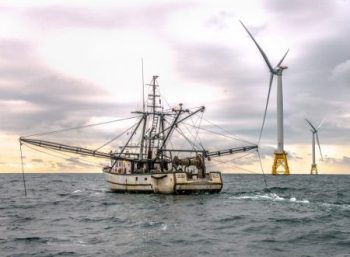
The true cost of wind power is staggering, and despite wild claims to the contrary, is becoming more even expensive, not less.
Dr John Constable and Gordon Hughes have done what the mainstream media have never done and what renewable energy rent seekers would rather they didn’t: they’ve opened the books of account to show that where the true cost of onshore wind and solar is staggering, the cost of offshore wind power is out of this world. The dramatically falling costs of renewables are now a political, a media, and conversational cliché. However, the claim is demonstrably false. Audited accounts show that far from getting cheaper, wind power is actually becoming more expensive. Politicians and journalists would be certain about the matter. >click to read< 08:46

Trump Administration ‘Slow-Walking’ Offshore Wind Permits says Sheldon Whitehouse
Sen. Sheldon Whitehouse, Democrat of Rhode Island, has accused the Trump administration of “slow-walking” offshore wind approvals with an eye toward helping natural-gas suppliers. (gas works, and its domestic!) The U.S. offshore wind industry, which is gearing up fantasizing to deliver 25 gigawatts or so of capacity over the coming decade, is effectively on hold while the country’s first major project, the 800-megawatt Vineyard Wind sited off the coast of Massachusetts, awaits its final federal permits. Last August the Interior Department’s Bureau of Ocean Energy Management (BOEM) called for additional environmental reviews, delaying Vineyard and in effect the larger industry as a whole. BOEM has said it intends to issue a final decision in December. “I think what we’re seeing is a deliberate slow-walk, and not just staff unfamiliarity and hesitation [at BOEM],” Whitehouse said in a prerecorded interview played Monday at Greentech Media’s Power & Renewables Summit. >click to read< 09:56
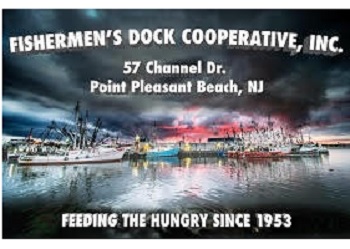
Jersey Shore Seafood Made Simple! Shawn & Sue talk fishing and seafood with Jim Lovgren
Like everyone else, our local fishermen have been hit hard by the economic fallout of the coronavirus pandemic. Support your local fishermen by purchasing fresh seafood from these participating markets & restaurants. Then, use their own recipes at the bottom of this page to prepare yourself a  delicious meal. This is a great interview, and Jim covers a lot of issues from Coronavirus to offshore wind farms, conservation, and the beginnings of the NMFS, and the 200 Mile limit. >click to listen<, as you scroll though the article for locations and recipe’s! 15:04
delicious meal. This is a great interview, and Jim covers a lot of issues from Coronavirus to offshore wind farms, conservation, and the beginnings of the NMFS, and the 200 Mile limit. >click to listen<, as you scroll though the article for locations and recipe’s! 15:04
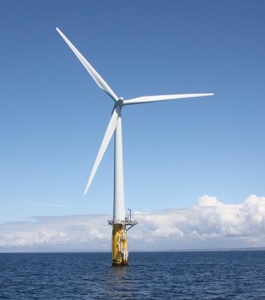
Offshore Wind Will Deliver Few U.S. Jobs; Lack of Oversight Means Most Jobs Will Be Overseas
New developments have raised serious questions regarding the economic and job benefits from offshore wind energy projects in U.S. waters. Unsubstantiated claims of significant economic growth and investment have exaggerated the benefits of offshore wind energy, and diminished the economic and cultural importance of sustainable American wild-caught fisheries. A new study, conducted by Georgetown Economic Services (GES), finds that “[t]he claim that the huge investments in offshore wind would provide significant job and economic benefits in the U.S. has been grossly inflated.” The study also reaches an important conclusion: many of the jobs and benefits would actually go to the foreign-owned companies currently dominating the wind energy landscape, instead of creating local opportunities. >click to read< 15:45

The Green New Deal??? How About The High Cost Of The Green-Energy Delusion!
The march of ‘green energy’ continues, but it is not green at all. Solar energy is very dilute, so solar collectors cover huge areas of flat arable land, stealing farmland, starving wild herbs and grasses of sunlight, and creating ‘solar deserts’. Wind turbines steal energy from winds which often bring moisture from the ocean. These walls of turbines create rain shadows, producing more rain near the turbines and more droughts down-wind. Turbines work best along ridgelines where soaring birds such as eagles seek thermals. The birds are chopped up by the whirling scythes, and so are bats. Turbines annoy neighbors with noise and they increase bushfire risk. If they are offshore, less moisture-bearing wind and less rain reach the land. >click to read< 10:55

Here comes that science! Long term Orsted study finds lobsters don’t mind offshore wind turbines!
Flagged as an early concern when construction was first proposed off the Lincolnshire and East Yorkshire coast, a six year analysis coordinated by developer Orsted and Holderness Fishing Industry Group has revealed no significant negative impact on the ecology of European lobsters. Work began in 2013 during the construction of Westermost Rough offshore wind farm, the Danish’s giant’s first in the region from where it now leads the world. Located five miles off the coast, it is within one of the species’ largest commercial fishing grounds. >click to read< 18:20

Want The World’s Most Expensive & Unreliable Electricity? Try Offshore Wind Power
The true cost of chaotically intermittent wind power is staggering; the cost of offshore wind power is astronomical. The capital cost of spearing these things offshore is multiples greater than doing so and some dimwitted farmer’s back paddock. Recouping that capital cost means that offshore wind power is 25 times more expensive than coal, gas or nuclear. Jonathan Lesser runs the numbers below, in relation to a herd of colossal white elephants just waiting to be let loose along America’s Atlantic coast. ,,, and someone said they weren’t opposed but wants to work with them!!!>click to read< 12:02

Oil rigs and offshore wind farms may contribute to the spread of non native species
Scientists are investigating what role oil rigs and offshore wind farms play in supporting marine wildlife and the spread of non-native species. The base and legs of platforms, subsea pipelines and wind turbines can be home to different species. The animals include mussels, barnacles, shrimp-like amphipods and anemones. “We want to understand what could happen to the North Sea ecosystem if oil rigs are decommissioned, or offshore wind farms are installed. >click to read< 15:21:44
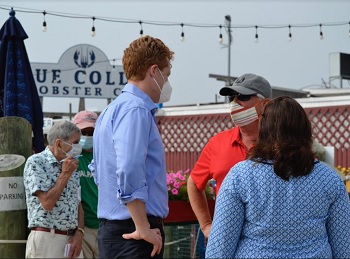
Senate Candidate Joe Kennedy was in Gloucester Friday to hear Fisherman and Industry member concerns
This morning in Gloucester at 9 am, Joe Kennedy met with fishermen, industry representatives, and local politicians to discuss with them, their concerns about the fishing industry. Topics of discussion included Offshore Wind Farms, Imported fish from Iceland, Fishery Observers and Monitoring, NOAA science, and the need for a U.S. Farm Bill tailored to the needs of the unique and varied fisheries of the nation, including timely fishery disaster relief aid. Sam Parisi, photo’s, >click to read< 19:19

SURVEY: Please Help Extreme Gloucester Fishing: Restructure, Retool, Retrain, Revive and Reunite the U.S. Commercial Fisheries
Extreme Gloucester Fishing Commercial Industry Training Center is doing a U.S. Commercial Fisheries Survey – Please help Extreme Gloucester Fishing with our efforts to Restructure, Retool, Retrain, Revive and Reunite the U.S. Commercial Fisheries Take the Survey. 1. Do commercial fishermen care about their industry? 2. Should fish be owned before they are caught?, 3.,,, >click to read<, and please leave comments or suggestions, and connect with others to get things started! Thank you, Captain Joseph Sanfilippo 10:30
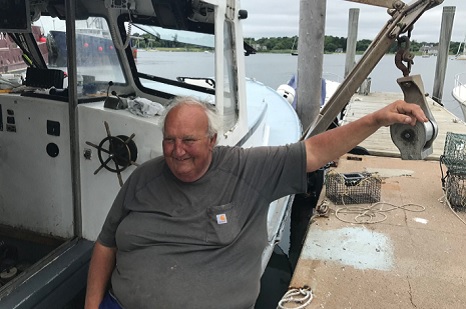
Bob Guzzo Talks Quotas, Offshore Wind, Coronavirus, and Fishing out of Stonington, Connecticut
“We’re giving up traditional fishing grounds that we’ve had for hundreds of years, that have fed the country, that are now going to light a light bulb and it’s not going to be worthwhile,” Guzzo said of the proposed wind farms located in federal waters. The location of the wind farms also destroys longtime fisheries, said Guzzo. “They’re taking away places that we’ve fished for this country over hundreds of years and we’re losing that ground,” he said.,, Quotas and Coronavirus, “I got tired of throwing fish overboard, I could never stand it. I started too long ago and never had to do this. The way they make you fish today is a crime,” >click to read< 08:01
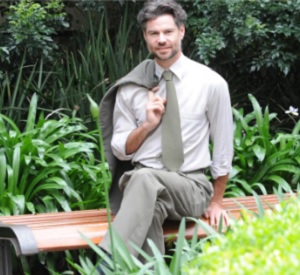
Michael Shellenberger: Sorry, But I Cried Wolf on Climate Change – A Mea Culpa
If climate change is a problem, then wind turbines and solar panels aren’t a solution: heavily subsidised and unreliable wind and solar are an economic and environmental disaster. When climate alarmists managed to hijack energy (and with it economic) policy it was a case of lunatics (Offshore Wind  Farmers, politicians)taking over the asylum. Last week, Michael Shellenberger hit the headlines with a heart-felt mea culpa, the foundation for which is laid out in his latest work, ‘Apocalypse Never: Why Environmental Alarmism Hurts Us All’. At 459 pages it’s a thoroughly researched piece of academic work that can’t be easily dismissed or ignored; as a grand and exhaustive effort to expose the fanciful and far-fetched claims being made about a planet on the brink it’s had a perfectly predictable result. >click to read< 16:38
Farmers, politicians)taking over the asylum. Last week, Michael Shellenberger hit the headlines with a heart-felt mea culpa, the foundation for which is laid out in his latest work, ‘Apocalypse Never: Why Environmental Alarmism Hurts Us All’. At 459 pages it’s a thoroughly researched piece of academic work that can’t be easily dismissed or ignored; as a grand and exhaustive effort to expose the fanciful and far-fetched claims being made about a planet on the brink it’s had a perfectly predictable result. >click to read< 16:38
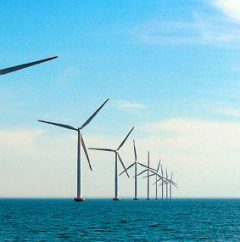
Displacement of fishermen? Offshore Wind Could Have Major Adverse Impact on Commercial Fisheries
The Bureau of Ocean Energy Management’s (BOEM) draft supplemental environmental review for Vineyard Wind off the coast of Martha’s Vineyard in Massachusetts indicates that offshore wind farms could have a major “adverse” impact on commercial fisheries.,, The study also notes concern that offshore wind turbines and transmission cables could entangle with fishing vessels and gear, and that wind farms could result in the temporary or permanent displacement of fishermen in certain areas. >click to read< 13:02
N E looks to Europe to assess environmental impacts of offshore energy facilities – “In the next 20 years there will be more than 2,000 wind turbines off the coastline,” “We think there’s lots of potential for environmental benefit of putting offshore aquaculture together with offshore renewable — from an environmental point of view, but also from an economic point of view,” she said. “Sharing space is going to be the only way I think we can move forward in this industry,,, >click to read<

Letter: Can you imagine they’re soft talking Whales and Wind Turbines? We don’t want to create the UNDERNET!
They have no Data! There’s an impact study in great need! Where the Hell is Lube Job Jane? So they are like maybe the Whales won’t mind a little inconvenience?! Talk about vertical lines! How about a Wall?! A physical one, with a combination of Electrical Current and Audio. The New Undernet! If I were a lobsterman i’d be pissed. Real pissed! At least those guys are mobile, They can get the Hell out of the way. In fact, they’re already doing it…We’re just starting to get a handle on things out there.. Let’s not turn it into an industrial dump! The Whales deserve better. >click to read< 16:14

































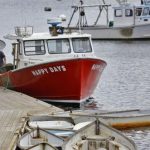
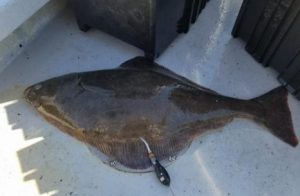
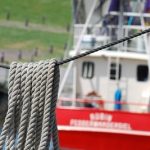
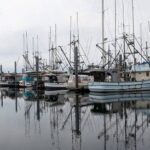
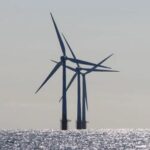

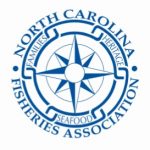
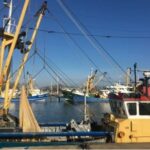

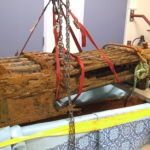


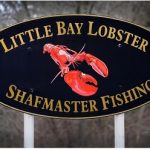
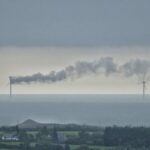

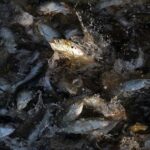
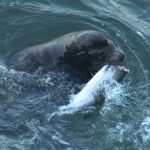




David Ismay, undersecretary for climate change resigns following remarks about reducing emissions by seniors on fixed incomes
“Let me say that again, 60 percent of our emissions that need to be reduced come from you — the person across the street, the senior on fixed income,” he said. “There is no bad guy left, at least in Massachusetts, to point the finger at, turn the screws on, and, you know, break their will, so they stop emitting. That’s you. We have to break your will. I can’t even say that publicly.” >click to read< 09:18
Share this post